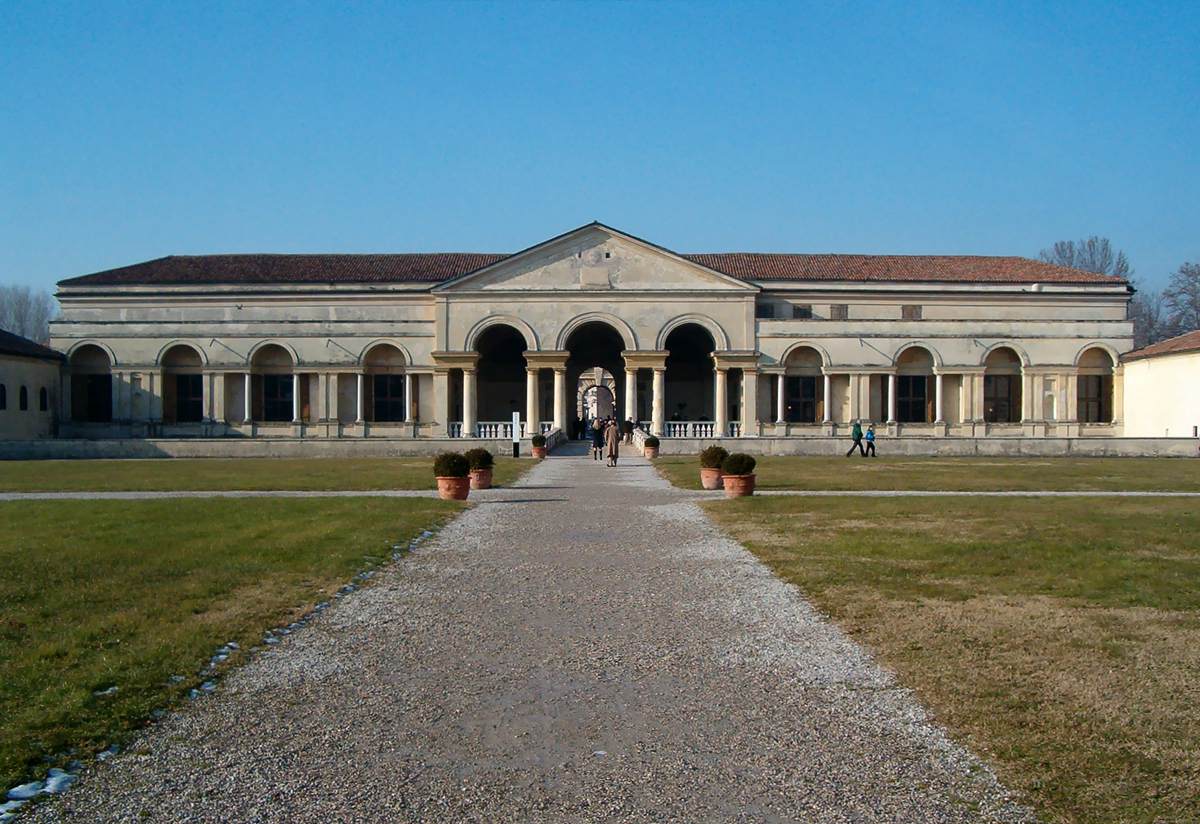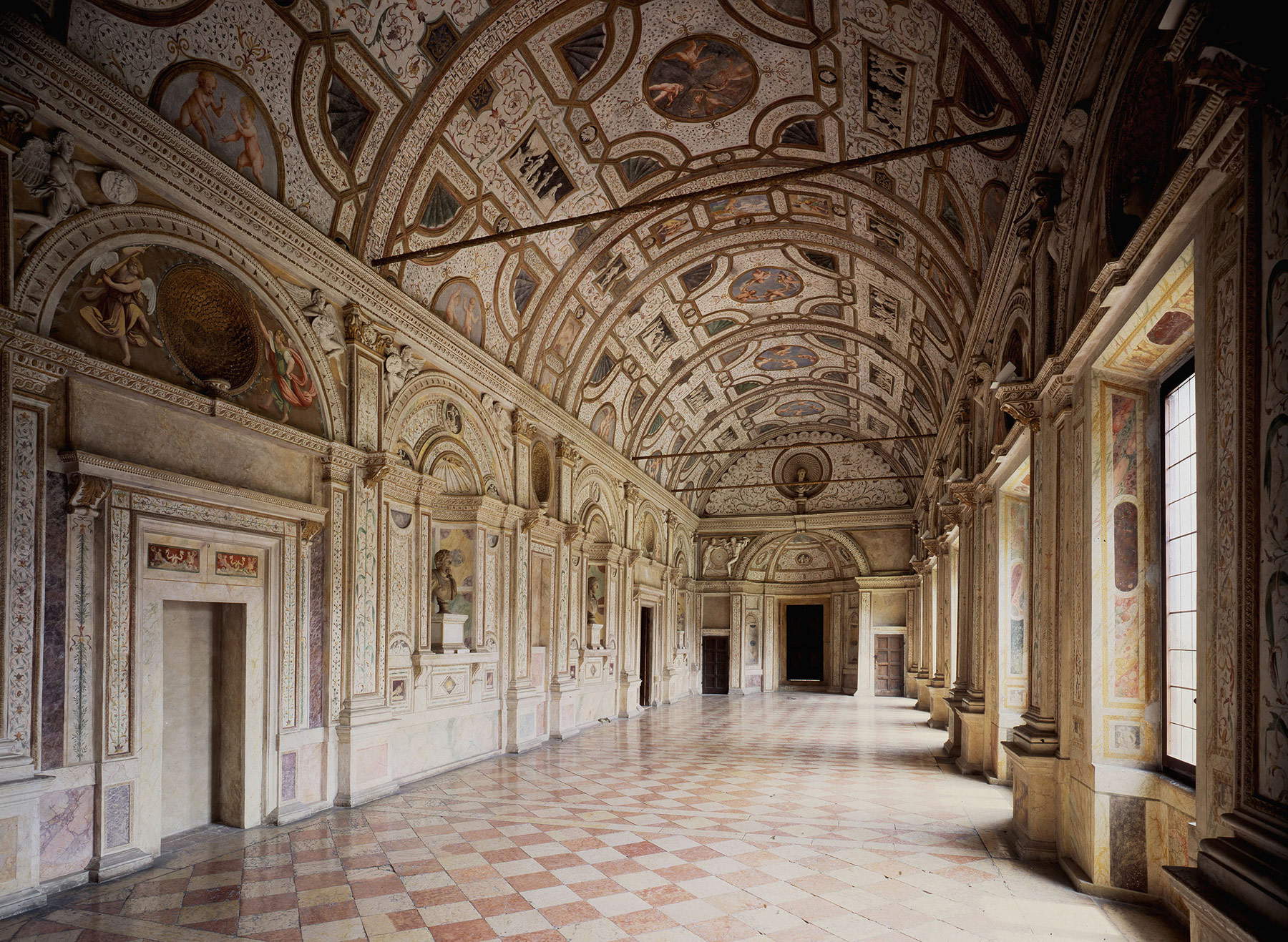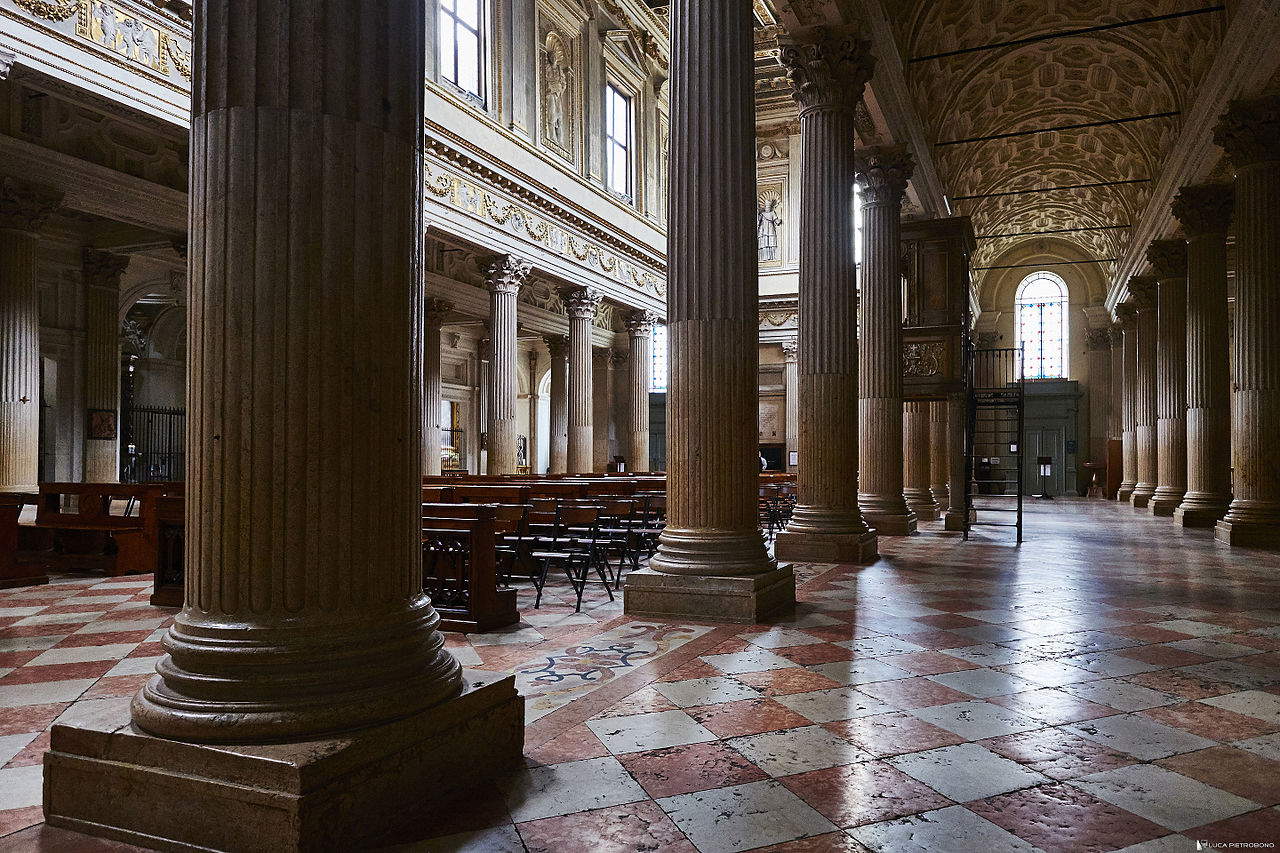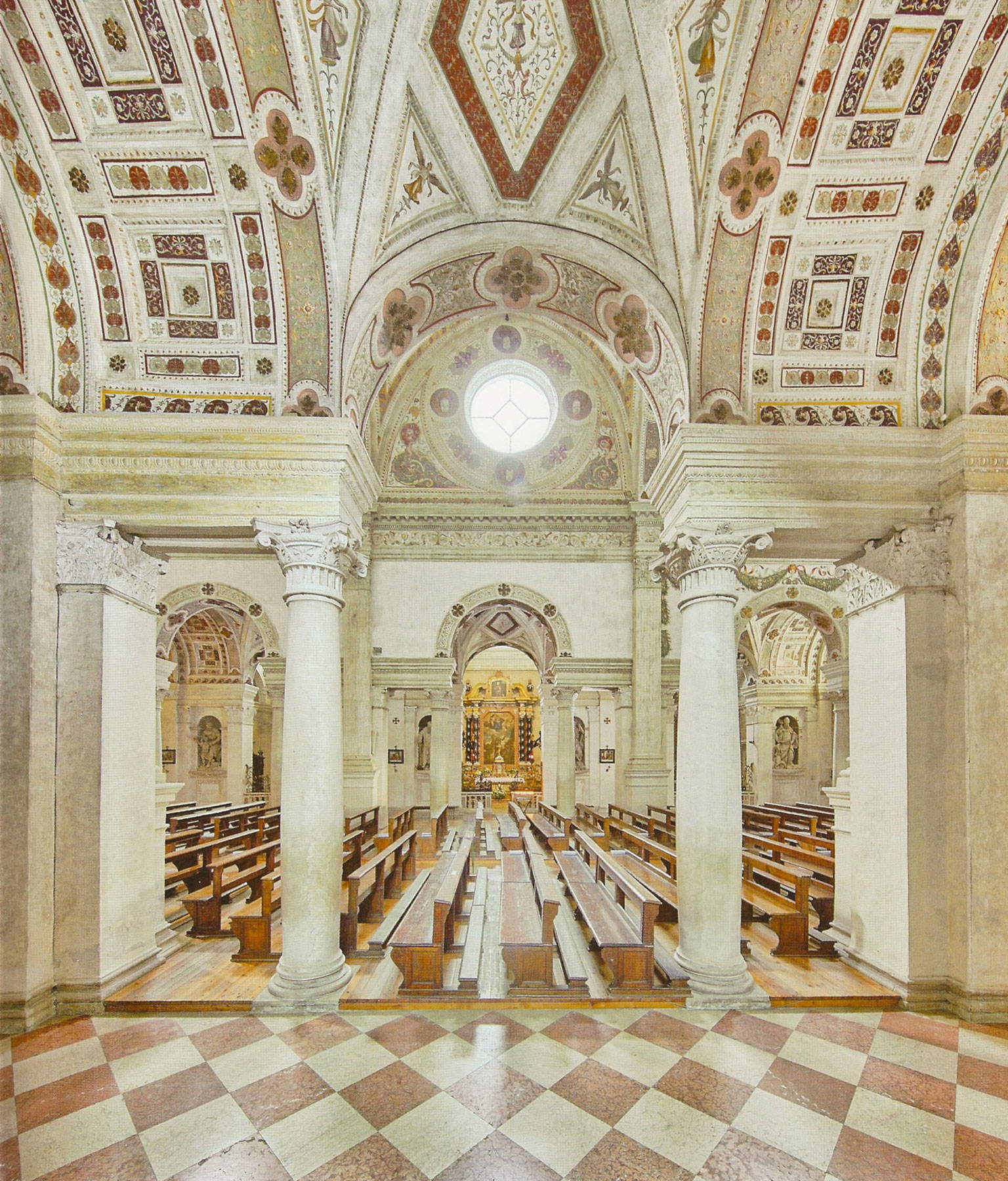Year 1524: one of the greatest artists of the time, Giulio Romano (Giulio Pippi de Iannuzzi; Rome, c. 1499 - Mantua, 1546) arrives in Mantua, called by the city’s marquis, Federico II Gonzaga. It was the beginning of an indissoluble relationship, so much so that the great Roman artist, a pupil of Raphael, one of the protagonists of the 16th century (recently investigated with two important exhibitions held in 2019, one at the Ducal Palace and the other at Palazzo Te), spent the rest of his career in the Gonzaga city, and in Mantua he disappeared in 1546. His name is thus deeply linked to that of the Lombard city, and naming the art of Mantua is almost equivalent to naming the art of Giulio Romano or vice versa. Let us therefore see an itinerary through five places in the city and its immediate surroundings, to visit perhaps on the weekend, in which it is possible to see the works of Giulio Romano (for those who want to learn more we also suggest the recent book by Stefano L’Occaso dedicated precisely to Giulio Romano).
1. Palazzo Te
The grand residence of Federico II Gonzaga on the edge of the historic center, set in the context of a park that today is one of the most frequented by Mantuans, is the reason why Giulio Romano was called to Mantua: the artist was in fact not only a painter, but also an architect, and the design of the sumptuous building is due to him. But not only that: in fact, Giulio Romano was also responsible for most of the frescoes. The Chamber of the Giants is one of the best-known rooms in the history of art: the illusionism of the paintings, which know no solution of continuity (it is a single, large scene that occupies all the walls and the entire ceiling), moves anyone who walks through the room to amazement. What’s more: the Chamber of Psyche is decorated with one of the most important fresco cycles of the 16th century, and no less remarkable are the other rooms of the fascinating building, works by Julius and his workshop. From the Loggia delle Muse to the Sala dei Cavalli (the only room in the palace that can boast the title of, indeed, “hall”), from the Camera degli Imperatori to the Camera degli Stucchi to the marquis’ place of retreat, the Appartamento Segreto: a unique journey through 16th-century art in a building that is a symbol of the 16th century.
 |
| View of Palazzo Te |
 |
| Palazzo Te, the Chamber of the Giants |
2. The Basilica of Sant’Andrea
Giulio Romano is also present in the city’s most famous church, the basilica of Sant’Andrea, Leon Battista Alberti’s masterpiece. Giulio Romano is credited with initiating the decoration of the Boschetti Chapel (also known as the “Chapel of St. Longinus” after the saint to whom it is dedicated), completed, in all probability, in 1536: the artist executed there by his own hand two altarpieces, anAdoration of the Shepherds with Saints John the Evangelist and Longinus, which is now in the Louvre (a copy of it can be seen in the chapel today), and a Crucifixion, which has remained in situ instead, where Christ is surrounded by clouds with a Dürerian flavor, and which precede some of the works Giulio would have done at the Ducal Palace.
3. Ducal Palace
In the great center of power of the Gonzaga marquisate, Giulio Romano worked as both architect and painter. As an architect we owe to him the Corte Nuova (built from 1536), the Galleria dei Mesi, imagined as a kind of large antiquarium, although probably largely rebuilt (1538) and the so-called Appartamento della Rustica (from 1539), as well as the rearrangement of some important rooms such as the Camera dei Cavalli (1536), the Camera delle Teste (1536) and the marvelous Sala di Troia (1538). To get to know the Giulio Romano artist, it is impossible to miss the very Sala di Troia: in fact, Giulio Romano is responsible for the decorations of what is perhaps the most magnificent room in the 16th-century core of the Palace. Just as one will not miss the Fall of Icarus in the Chamber of Horses, one of the most powerful inventions of Giulio Romano’s art (we preserve the drawing), translated in less happy terms, however, into painting by Anselmo Guazzi, the author of the finished work.
 |
| Ducal Palace, the Hall of Troy |
 |
| Ducal Palace, the Gallery of the Months |
4. The Duomo
In 1545 Giulio Romano was called upon to renovate the Cathedral of Mantua by Cardinal Ercole Gonzaga, after a fire required major restoration work. The artist kept the exterior intact but worked briskly on the interior of the city’s main church: he increased the naves from three to five by referring to a classical model, that of the Basilica of Constantine, i.e., the same one in which St. Peter’s Basilica in Rome was presented at the time, which provided the artist with inspiration (not only in artistic terms: probably the client, by having the building renovated by taking the papal basilica as a reference, intended to emphasize his ambitions). The result was a building with an airy classical style. Giulio Romano, however, did not have time to see the altarpieces, which were made only after his death in the 1650s: they are mainly due to painters from Verona (such as Paolo Farinati, Domenico Brusasorci, and Paolo Caliari) but also to painters of his school such as Fermo Ghisoni, Ippolito Costa, and perhaps Giovanni Battista Bertani. The work by Fermo Ghisoni, the Vocation of Saints Andrew and Peter, deserves a separate mention: today we no longer have the original and know it only from Felice Campi’s 19th-century copy, but we know that the initial design, dating back to 1541, is due to Giulio Romano, who then entrusted the cartoon precisely to Fermo Ghisoni.
 |
| The interior of the Cathedral of Mantua. Ph. Credit Luca Pietrobono |
5. The Monastery of Polirone in San Benedetto Po.
Among the most important interventions made by Giulio Romano in the immediate vicinity of Mantua was the renovation of the Polirone complex at San Benedetto Po, the large monastery that in the early decades of the 16th century was still in its late Gothic forms (which can be intuited in some places today): in 1540, Abbot Gregorio Cortese, a fine humanist, called Giulio Romano to carry out an important work of rearrangement of the entire monastery, which we see today in the forms conferred on it by the great artist and architect, who nevertheless posed the problem of dialoguing with ancient art, assimilating and mediating as much as possible, but not without failing to give the abbey church its classicist imprint. The decorations, entrusted to the hands of his collaborators and drawn from his typical repertoire, are also due to his inspiration: the geometrically shaped ornaments (based on square and hexagon), for example, recall those of the Camera dei Venti at Palazzo Te, while the coffers of the splendid sacristy closely recall those of the Loggia delle Muse at Palazzo Te. For more, see also Giuseppe Adani’s article on the Polirone monastery.
 |
| The interior of the abbey church of the Polirone monastery. |
 |
| The sacristy of the monastery of Polirone |
 |
| Five places to learn about Giulio Romano in and around Mantua in two days |
Warning: the translation into English of the original Italian article was created using automatic tools. We undertake to review all articles, but we do not guarantee the total absence of inaccuracies in the translation due to the program. You can find the original by clicking on the ITA button. If you find any mistake,please contact us.